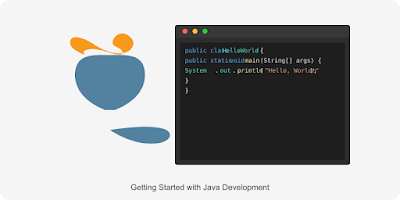Operating systems are the essential intermediaries between hardware and software, providing the foundation for all computing activities. Throughout this course, I've developed a comprehensive concept map that visually represents the fundamental concepts underlying operating systems. This blog post summarizes key insights gained about operating system theory, highlighting how these concepts work together to create efficient, secure computing environments.
Features and Structures of Contemporary Operating Systems
 |
| Operating Systems Structure |
Modern operating systems serve as resource managers that coordinate hardware components while providing services to users and applications. My concept map illustrates how operating systems are structured around several key functions:
The core of an operating system revolves around resource management—handling CPU scheduling, memory allocation, and I/O operations. These functions are implemented through a hierarchical structure that includes kernel mode (for privileged operations) and user mode (for application execution). System calls serve as the bridge between these modes, allowing applications to request services while maintaining security boundaries.
As Silberschatz et al. (2014) explain, this structure enables operating systems to balance competing demands for limited resources while providing abstractions that simplify application development. The interplay between resource management and system structure forms the foundation upon which all other operating system functions are built.
Process Management and Information Sharing
 |
| Process Management |
Operating systems enable concurrent execution through sophisticated process management techniques. The concept map demonstrates how processes transition through various states (new, ready, running, waiting, and terminated) managed by the Process Control Block (PCB).
Threading models represent a crucial evolution in process management. While single-threaded processes follow a linear execution path, multi-threaded processes support multiple execution flows that share resources. This capability enhances responsiveness and resource utilization but introduces synchronization challenges. Critical section problems arise when multiple threads attempt to access shared data concurrently, requiring solutions such as mutex locks and semaphores to maintain data integrity.
The concept map highlights how modern operating systems have evolved to support increasingly complex applications through sophisticated process and thread management, enabling efficient information sharing while preventing data corruption.
Memory Management Solutions
 |
| Memory Management |
Memory management involves controlling and coordinating computer memory—one of the most critical resources in computing systems. As shown in my concept map, operating systems employ various techniques to manage both physical and virtual memory spaces.
Physical memory management uses base and limit registers to protect memory spaces between processes. However, virtual memory represents a revolutionary concept that extends this capability, allowing programs to execute even when only partially loaded into physical memory. Through demand paging and segmentation, operating systems can efficiently utilize limited physical memory while providing applications with the illusion of abundant memory resources.
Memory allocation algorithms (first-fit, best-fit, and worst-fit) demonstrate the tradeoffs between allocation efficiency and execution speed. These algorithms reflect a fundamental challenge in operating system design: balancing competing objectives to create systems that are both efficient and practical.
File Systems, Storage, and I/O Management
 |
| File Systems, Storage, and I/O Management |
File systems provide the mechanisms for storing and accessing data, programs, and user information. My concept map illustrates the progression of directory structures from simple single-level organizations to complex general graphs, reflecting the evolution of computing needs.
The I/O subsystem demonstrates the layered approach common in operating system design. Hardware components (controllers and devices) interface with software components (device drivers and user libraries) through standardized protocols. Direct Memory Access (DMA) and buffer caches optimize data transfer between storage and memory, highlighting how operating systems integrate different subsystems to enhance performance.
These interconnected components create a robust system for data management that balances performance, reliability, and usability—essential characteristics of modern computing environments.
Protection and Security Mechanisms
 |
| OS Security |
Access control represents the foundation of operating system security. My concept map illustrates two primary approaches to implementing the access matrix: access control lists (associated with objects) and capabilities (associated with domains). Each approach offers distinct advantages and limitations, demonstrating the tradeoffs inherent in security design.
Domain-based protection implements the principle of least privilege, allowing processes to operate with minimal necessary permissions. Language-based protection (exemplified by Java Virtual Machine environments) adds another security layer through type safety and code verification.
These protection mechanisms work together to safeguard both the operating system and user data from unauthorized access or modification, reflecting the increasing importance of security in modern computing environments.
Applications in Future Learning and Career
Understanding operating system theory provides a foundation for advanced study in numerous computing fields. In future courses, I can apply these concepts to cloud computing (building on virtualization principles), distributed systems (extending process communication models), and cybersecurity (applying protection mechanisms in networked environments).
Professionally, this knowledge will enhance my ability to optimize system performance, troubleshoot complex issues, and design secure applications. Whether developing software, managing systems, or analyzing security vulnerabilities, a deep understanding of operating system fundamentals provides the context necessary to make informed technical decisions.
The concept map I've developed not only represents the breadth of operating system theory but also illustrates how these concepts interconnect to create cohesive, functional systems. This holistic perspective will prove invaluable as I continue to explore the ever-evolving field of computer science.
 |
| OS Theory Concepts |
References
Silberschatz, A., Galvin, P. B., & Gagne, G. (2014). Operating system concepts essentials (2nd ed.). Retrieved from https://redshelf.com/
TutorialsPoint. (n.d.). Operating system - File system. https://www.tutorialspoint.com/operating_system/os_file_system.htm
TutorialsPoint. (n.d.). Operating system - I/O hardware. https://www.tutorialspoint.com/operating_system/os_io_hardware.htm
TutorialsPoint. (n.d.). Operating system - I/O software. https://www.tutorialspoint.com/operating_system/os_io_software.htm
TutorialsPoint. (n.d.). Operating system - Memory management. https://www.tutorialspoint.com/operating_system/os_memory_management.htm
TutorialsPoint. (n.d.). Operating system - Multi-threading. https://www.tutorialspoint.com/operating_system/os_multi_threading.htm
TutorialsPoint. (n.d.). Operating system - Process scheduling. https://www.tutorialspoint.com/operating_system/os_process_scheduling.htm
TutorialsPoint. (n.d.). Operating system - Processes. https://www.tutorialspoint.com/operating_system/os_processes.htm
TutorialsPoint. (n.d.). Operating system - Virtual memory. https://www.tutorialspoint.com/operating_system/os_virtual_memory.htm











